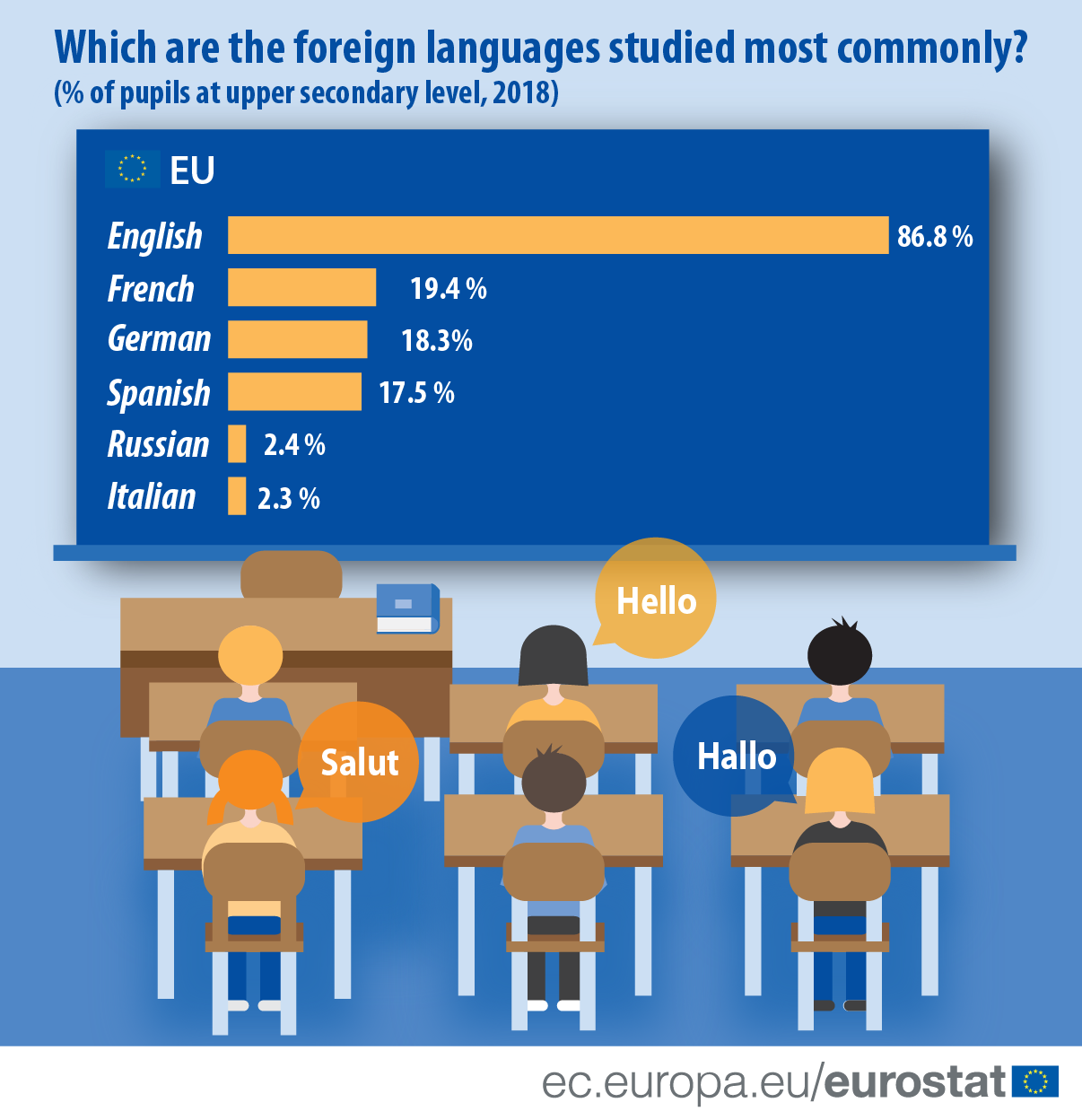Knowledge of foreign languages is an essential tool for cultural exchange. It is widely known how much linguistic competencies are required and encouraged in many workplaces and how they can facilitate communication in several other contexts. In this regard, Eurostat’s administrative statistics on education provide a comprehensive picture on language learning in primary and secondary schools of the European Union’s (EU’s) Member States, EFTA and candidate countries.
In the EU, 48% of the pupils in upper secondary education (ISCED level 3) studied two or more foreign languages in 2018. This share was higher than 80% in Romania (98%), Finland (94%), the Flemish community of Belgium (84%) and Luxembourg (82%). On the other end of the ranking, in Greece, only 1% of the students in upper secondary education studied two or more foreign languages in 2018.
Source dataset: educ_uoe_lang02
English is, by far, the most commonly studied foreign language in upper secondary education in the EU. Almost 87% of pupils learned English in upper secondary education in 2018. English was followed by French (19%), German and Spanish (both around 18%).
In 2018, in all EU Member States more than 65% of students enrolled in upper secondary education were learning English as a foreign language, with the exception of Denmark (57%). Russian was the most commonly non-EU language learned in 2018 (2%) especially in Latvia (48%), Estonia (44%), Bulgaria and Lithuania (both around 26%).
Source dataset: educ_uoe_lang01
Notes:
- For the purpose of this news item, Belgian French and Flemish Communities are counted separately.
- Relevant updated information on UOE data collection and Quality reports compiled at country level can be found in the Education administrative metadata file.
- The European Union (EU) includes 27 EU Member States. The United Kingdom left the European Union on 31 January 2020. Further information is published here.
To contact us, please visit our User Support page.
For press queries, please contact our Media Support.


